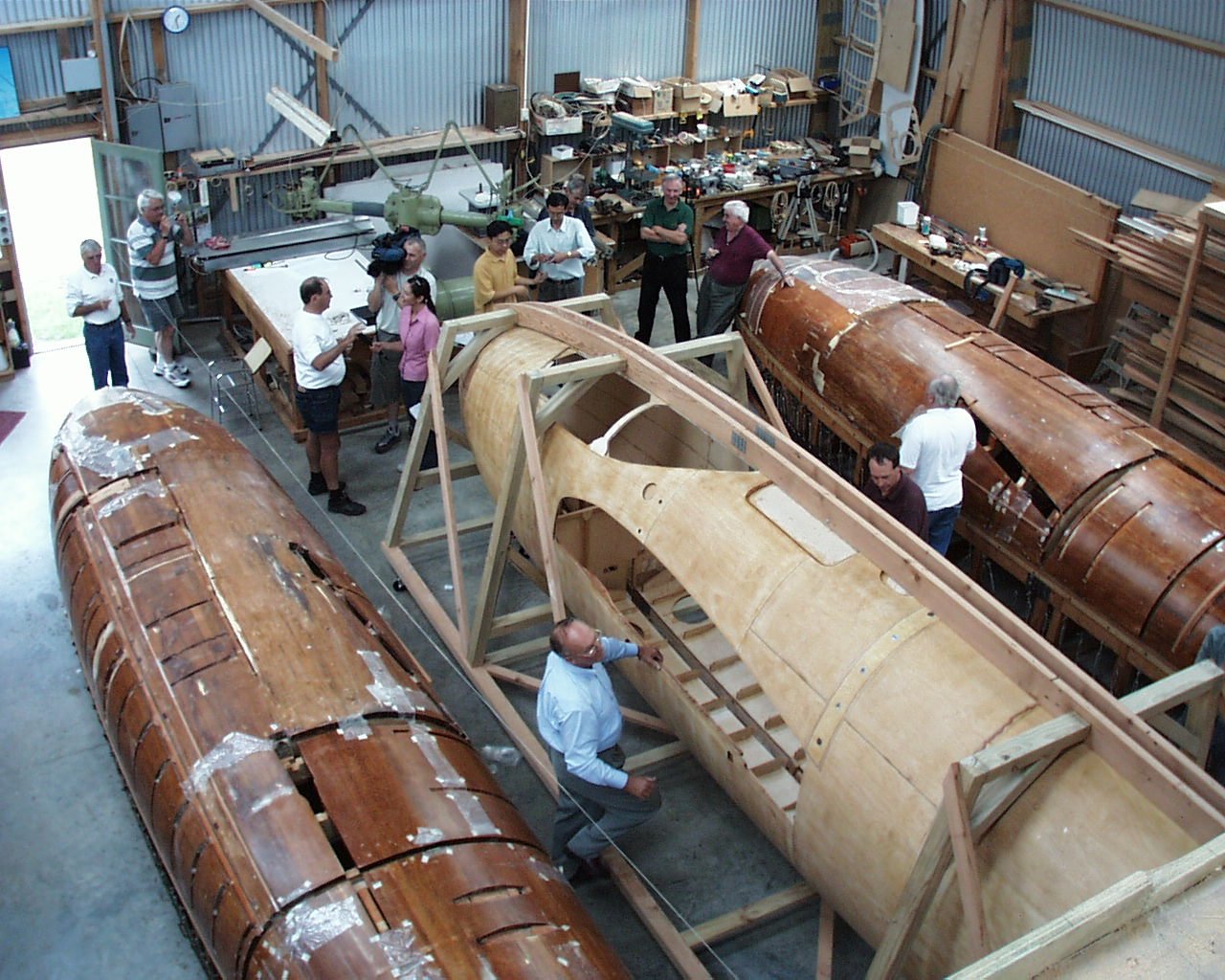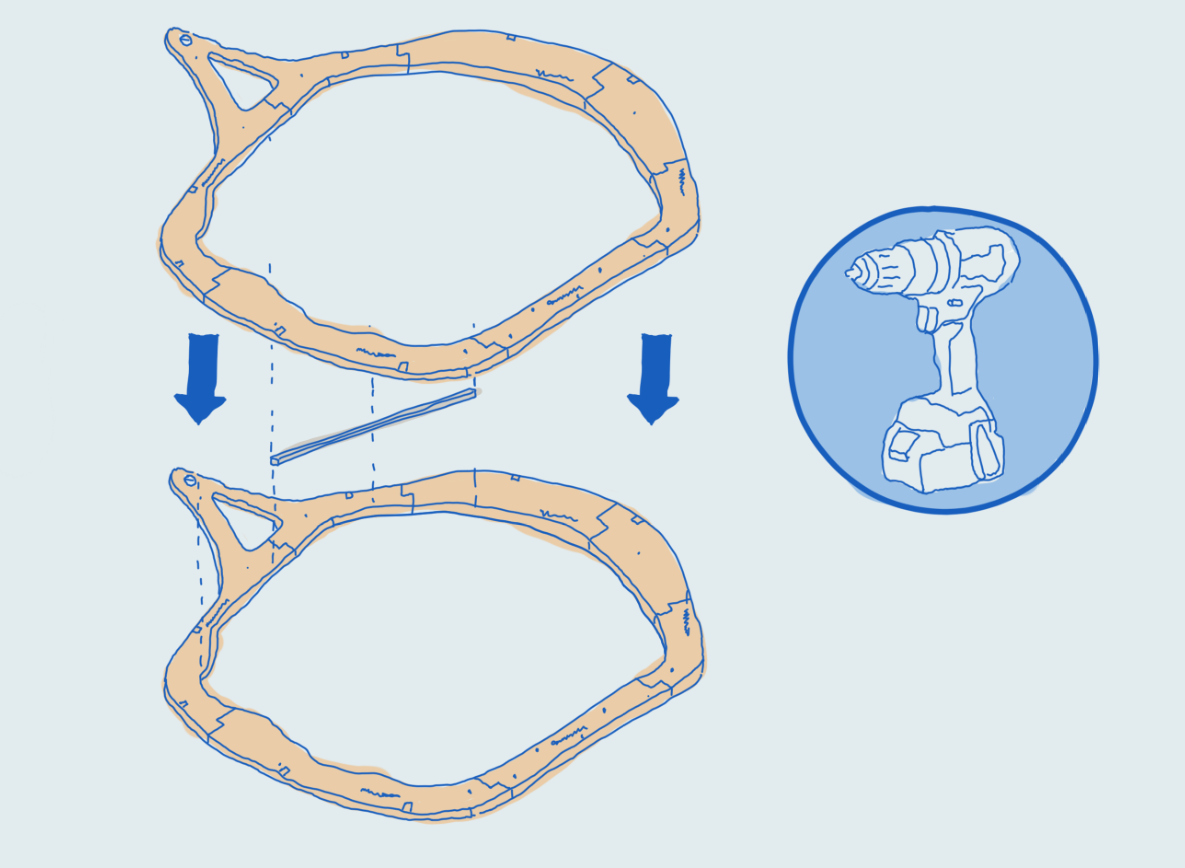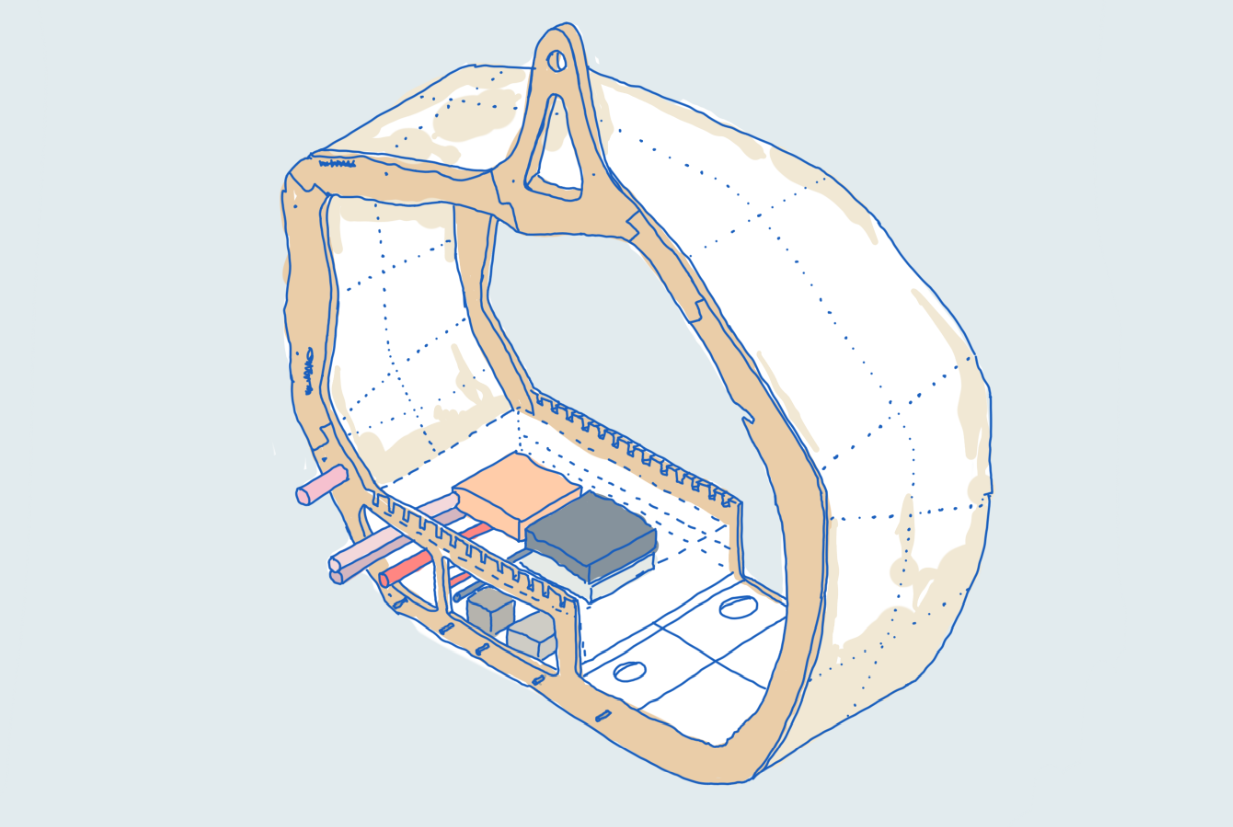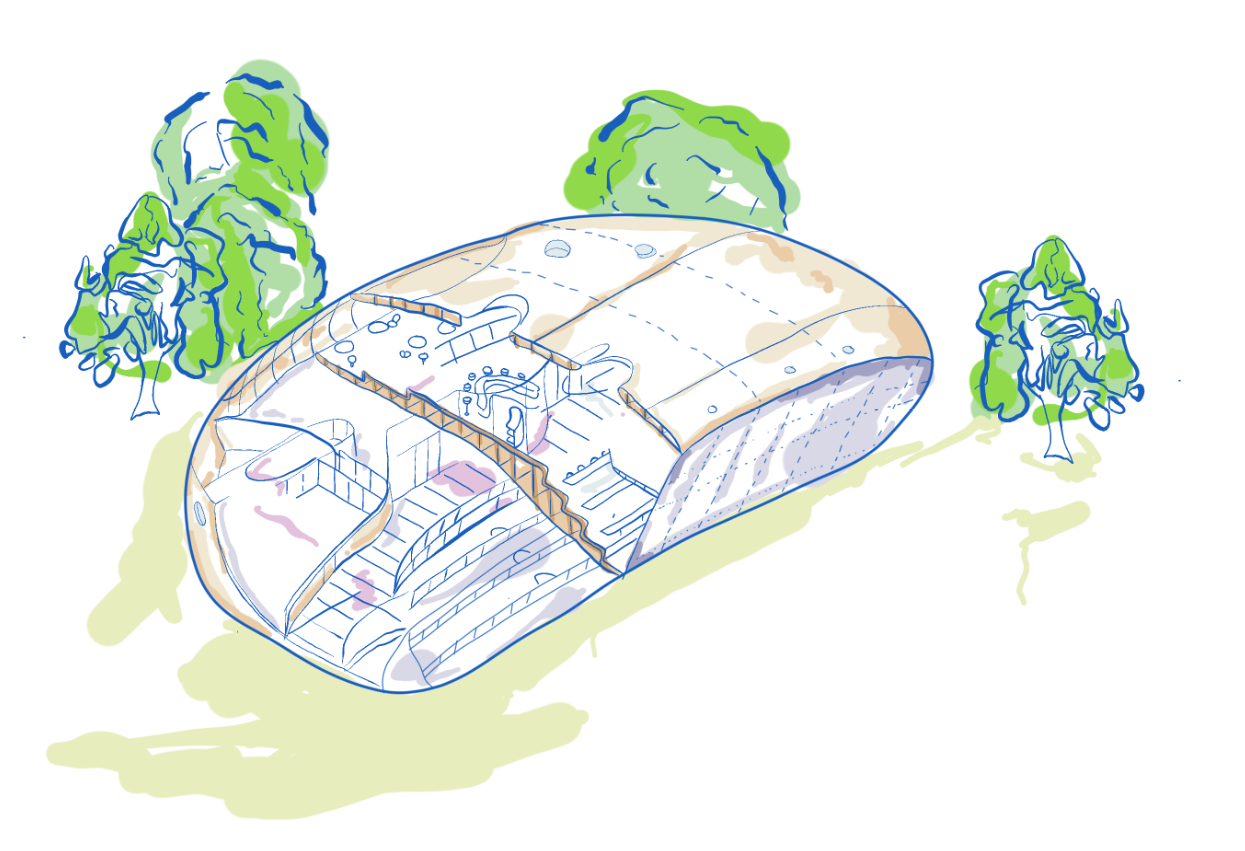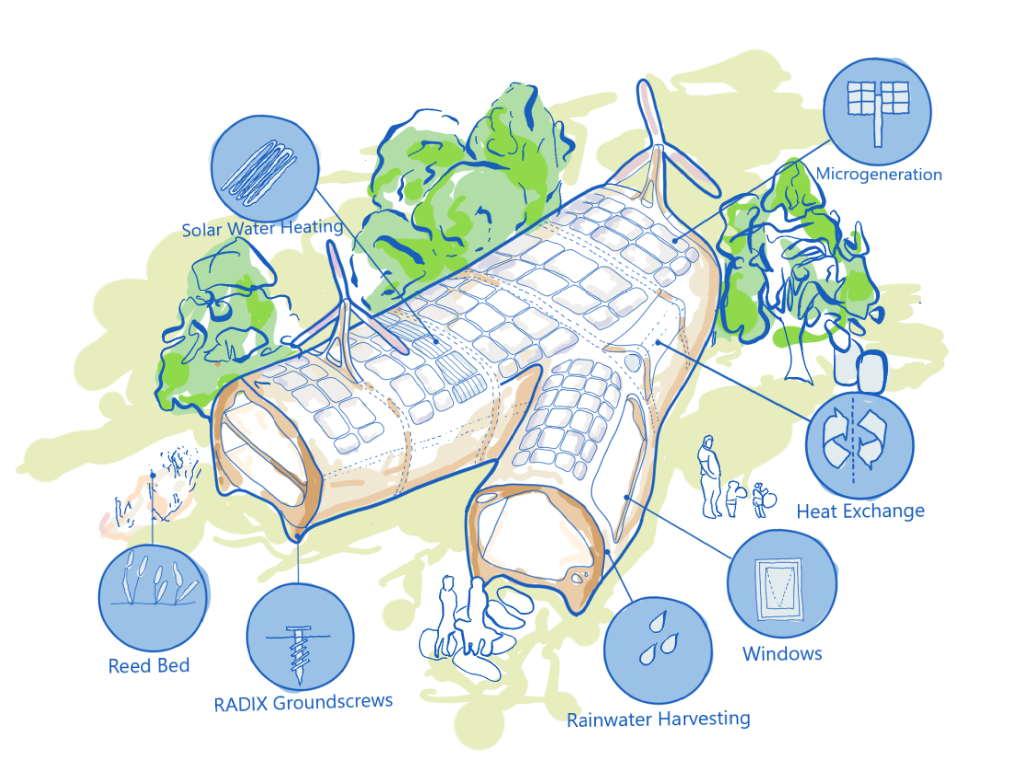Monocoque Structure in Architecture: How Aerospace Engineering is Shaping Eco-Building
We help Maximise Your Rental Income with Eco-homes and Luxury Holiday Homes, provided by RIBA Chartered Architects.
The Monocoque Cabin, a prototype eco holiday retreat designed by Markos Design Workshop, demonstrates how a curving timber shell can serve as both the structure and the skin of a building. The entire exterior shell carries the load without a separate frame, allowing an open, airy interior for its compact footprint.
Introduction - Monocoque Construction in Architecture
Lightweight. Strong. Efficient. And assembled with precision.
Monocoque construction, borrowed and advanced from aerospace and automotive design, is now transforming the way we think about buildings. Unlike traditional framed systems, which rely on an internal skeleton, monocoque structures distribute load through the external shell. Like an eggshell or fuselage, this creates buildings that are lighter, stronger, and far more material-efficient.
This method offers a sustainable and efficient construction process. By reducing the need for excess materials and enabling off-site prefabrication, monocoque construction is opening new doors in modular housing, off-grid cabins, and even larger commercial projects. Combined with Design for Manufacture and Assembly (DfMA), it allows for faster build times, lower carbon footprints, and beautifully streamlined forms.
Monocoque architecture and structures is a process we established ourselves with the Monocoque Cabin, our award-winning prototype, which brings these principles to life in a real, buildable, rentable structure.
What is a Monocoque Structure?
The term “monocoque” comes from French, meaning “single shell,” and it describes a structural system where loads are supported by the external skin of an object. In simple terms, the outer shell itself is the structure – there’s no separate internal frame doing the heavy lifting. This concept first emerged in early 20th-century transportation design. Engineers in the automotive and aviation fields discovered that by eliminating the internal skeleton and making the skin carry the stresses, they could achieve significant weight savings while maintaining strength.
Early examples from history illustrate the impact of this idea. In automobiles, the 1934 Citroën Traction Avant was a pioneer: it featured an all-steel monocoque body that did away with the traditional chassis, thereby reducing weight and lowering the car’s centre of gravity. This innovation improved both efficiency and handling, setting a template for modern unibody cars. In aviation, designers of the era pushed the envelope even further. The 1912 Deperdussin racer, for instance, used a laminated wood shell for its fuselage, no internal frame, just layers of veneer glued into a rigid, seamless tube. This gave it a smoother, lighter body that helped it outpace competitors. By World War II, aircraft like the British de Havilland Mosquito (a twin-engined combat plane) famously employed a timber monocoque fuselage and wings, achieving remarkable strength-to-weight performance for its time. Engineers had learned that a well-designed shell could handle both tension and compression forces, much like a nut’s shell or an egg, with minimal internal bracing.
By eliminating the usual ribs and beams, these early monocoque designs proved that a single, unified shell could be both light and incredibly robust. They demonstrated the core monocoque idea: when structure and skin become one, materials work more efficiently. This philosophy has since crossed over from planes and cars into architecture. Today, architects are taking that same principle – treating the building’s envelope as the structural system – and using it to create innovative structures that push the boundaries of form, sustainability, and construction speed.
Speak to Peter the Architect
Book Your Free 20-Minute Project Strategy Call
If you’re exploring lightweight, efficient building methods, whether for modular homes, off-grid cabins or a bespoke architectural project, we are always interested in working on interesting construction methods and with interesting clients. On the call, we will look into:
The benefits of modern methods over traditional framing in cost, speed and sustainability
How digital fabrication and DfMA can reduce risk and improve accuracy
Realistic build costs based on our work with the Monocoque Cabin
The next step: feasibility, concept development or prototyping
Workshop teams assembling the timber monocoque fuselage of a de Havilland Mosquito, a WWII aircraft that demonstrated the strength and efficiency of shell-based construction long before its adoption in modern architecture.
Automotive Pioneers
In the automotive world, monocoque construction revolutionised how cars were built. Before the 1930s, most cars had a separate chassis (frame) onto which the body was built. The breakthrough came with vehicles like the Citroën Traction Avant (1934), one of the first mass-produced cars with a unitary monocoque body. Its all-steel shell eliminated the need for a heavy frame, which dramatically reduced the car’s weight while increasing rigidity. This not only improved fuel efficiency due to the lower weight, but also enhanced handling and safety – the Traction Avant’s lower centre of gravity made it remarkably stable for its era. Other manufacturers soon followed suit, and the concept of the “unibody” car became the new standard. By integrating the support structure and exterior body into one, automakers achieved better performance without adding bulk. This automotive innovation established a precedent: a well-designed thin shell could do the job of thick supports, inspiring architects to imagine doing the same for buildings.
Aerospace Applications
Aerospace engineers were simultaneously developing monocoque ideas in pursuit of lighter, faster aircraft. Early planes were built with internal frames covered in fabric, but pioneers quickly saw the benefit of a stiff outer skin that could take on more load. One landmark was the Deperdussin Monocoque racer in 1912, which used layers of glued veneer to form a rigid fuselage shell – a technique borrowed from boat building. This gave the plane a huge advantage: the smooth, load-bearing wood shell reduced drag and weight, helping it win numerous races.
During the 1930s and 40s, aircraft like the Spitfire fighter and the Mosquito further proved the monocoque approach with their sleek, stiff skins. The Mosquito in particular was constructed largely of wood due to wartime material shortages, yet its performance was outstanding – a testament to monocoque efficiency. By carrying loads in its moulded plywood skin, the Mosquito avoided the weight penalty of a conventional frame, showing that even natural materials could be engineered into high-performance monocoque forms. These successes in aviation, where every pound saved meant longer range or better agility, cemented the value of monocoque construction. They also provided a knowledge base that architects later drew upon: if an eggshell-thin wooden aeroplane could survive the stress of combat, could a building’s envelope be designed to support daily loads of gravity and weather with similar elegance?
Monocoque Construction in Architecture
Monocoque and traditional framed structures differ in how they bear loads. Traditional buildings rely on internal beams and columns, whereas monocoque designs use the external skin to carry structural forces.
This integration of form and structure allows for more efficient use of materials and opens up possibilities for advanced prefabrication and modular systems.
Conceptual diagram of a monocoque structural system for a small building. Instead of a separate frame and cladding, a series of rib-like timber frames (bulkheads) and a continuous outer skin work together to create a stiff shell. Even mechanical services and insulation can be integrated within the cavity of the shell, maximising space efficiency.
Advantages of Monocoque Chassis in Architecture
Monocoque structures offer several key benefits:
Material Efficiency: Eliminating separate internal frames and external cladding reduces waste and cost.
Structural Strength: Distributing loads across the shell increases durability without added bulk.
Design Flexibility: Prefabrication allows for more complex forms and rapid assembly.
Sustainability: Reduced material use and waste align with eco-conscious construction goals.
These advantages are embedded in our work, such as the Mono-Systems project and the Monocoque Cabin.
Innovative Materials Used in Monocoque Systems
Traditional framed buildings are easier to modify during and after construction, as the internal skeleton supports the structure, allowing non-structural walls to be repositioned. Monocoque structures, however, require precise design upfront. Altering the shell later on can compromise the building's structural integrity, which means that these projects demand careful planning and engineering from the outset.
A digital fabrication model showing how monocoque shells can be assembled using DfMA principles, with prefabricated components brought together for rapid, precise construction.
How Monocoque Chassis Improve Sustainability
Monocoque systems generally offer better sustainability performance due to their reduced material use and potential for prefabrication. By minimising waste during both fabrication and assembly, monocoque construction aligns well with the goals of sustainable architecture. Traditional framed structures, while adaptable, often generate more waste and require more resources over the course of construction.
This diagram shows how monocoque bulkheads are aligned and fixed together, demonstrating the simplicity and precision of the assembly process.
Innovative Materials Used in Monocoque Construction
Recent advances in materials have allowed monocoque construction to evolve and expand into architectural applications. Engineered timber, such as cross-laminated timber (CLT), and plywood composites are commonly used in monocoque systems because they provide a high strength-to-weight ratio and are sustainable. These materials also allow for precise fabrication, which is critical when constructing complex shell structures.
In addition to timber, advanced composites like fibreglass and carbon fibre, originally developed for aerospace applications, are now being adapted to architectural uses. These materials are durable and lightweight, making them ideal for creating strong, yet flexible, monocoque shells. Steel and aluminium are also used in projects that require a balance of strength and flexibility. These innovative materials enable architects to push the boundaries of design, creating efficient, high-performance structures that are also environmentally responsible.
This cutaway module shows how the monocoque shell can incorporate mechanical and service systems directly within the structure, improving efficiency and reducing internal framing.
Applications of Monocoque Systems in Modern Architecture
Monocoque systems are increasingly being used in a variety of architectural projects, particularly those focused on sustainability and innovation. Modular housing and off-grid cabins, which prioritise material efficiency and speed of construction, are ideal candidates for monocoque designs. These systems also allow for sleek, streamlined forms that reduce material waste while maintaining structural integrity.
In larger projects, such as stadiums and airports, monocoque systems are valued for their ability to span large distances without internal support. This creates open, flexible spaces that are both aesthetically pleasing and structurally sound. Monocoque systems are also being applied in high-performance buildings, where energy efficiency and sustainability are key considerations. By integrating insulation and other energy-saving technologies within the shell, these buildings achieve high levels of thermal performance, further contributing to their overall sustainability.
This cutaway sketch illustrates how the monocoque shell forms both the structure and the enclosure, eliminating internal framing and creating a lightweight, highly efficient architectural form.
Challenges and Limitations of Monocoque Construction
Despite their benefits, monocoque systems present design and engineering challenges:
High precision required – any design change post-fabrication can compromise the structure
Material costs – advanced composites and engineered timber can be expensive
Engineering complexity – large spans or custom shapes demand advanced design tools
However, advances in parametric modelling and digital fabrication are steadily reducing these barriers.
Monocoque Chassis in Prefabrication and Modular Architecture
Monocoque chassis systems are particularly suited to prefabrication and modular construction due to their material efficiency and streamlined assembly process. By manufacturing monocoque components off-site with precision, these structures can be quickly assembled on-site, reducing construction time and minimising waste. The lightweight, durable nature of monocoque systems makes them ideal for modular buildings that need to be relocated or reconfigured over time.
Monocoque designs also integrate well with energy-efficient systems and insulation, enhancing both performance and sustainability in modular architecture. This makes monocoque chassis a forward-thinking solution for projects where speed, efficiency, and sustainability are key priorities.
Future Trends: Monocoque in Sustainable and Resilient Architecture
The future of monocoque design lies in:
Parametric design and 3D printing
Climate-resilient buildings capable of withstanding extreme conditions
Net-zero and off-grid systems integrated within structural shells
These innovations will help monocoque architecture evolve into a mainstream solution for efficient, sustainable, and expressive buildings.
This design concept shows how a monocoque shell can form the main structure while integrating sustainable systems such as solar heating, microgeneration, rainwater harvesting and RADIX ground screws.
Conclusion: Monocoque as a Game-Changer in Structural Design
Monocoque construction offers a practical, sustainable approach to modern architecture. With better strength-to-weight performance, reduced waste, and elegant forms, monocoque systems are well-positioned to shape the next generation of eco-conscious building.
Want to experience a monocoque structure first-hand? Stay in our award-winning Monocoque Cabin.


